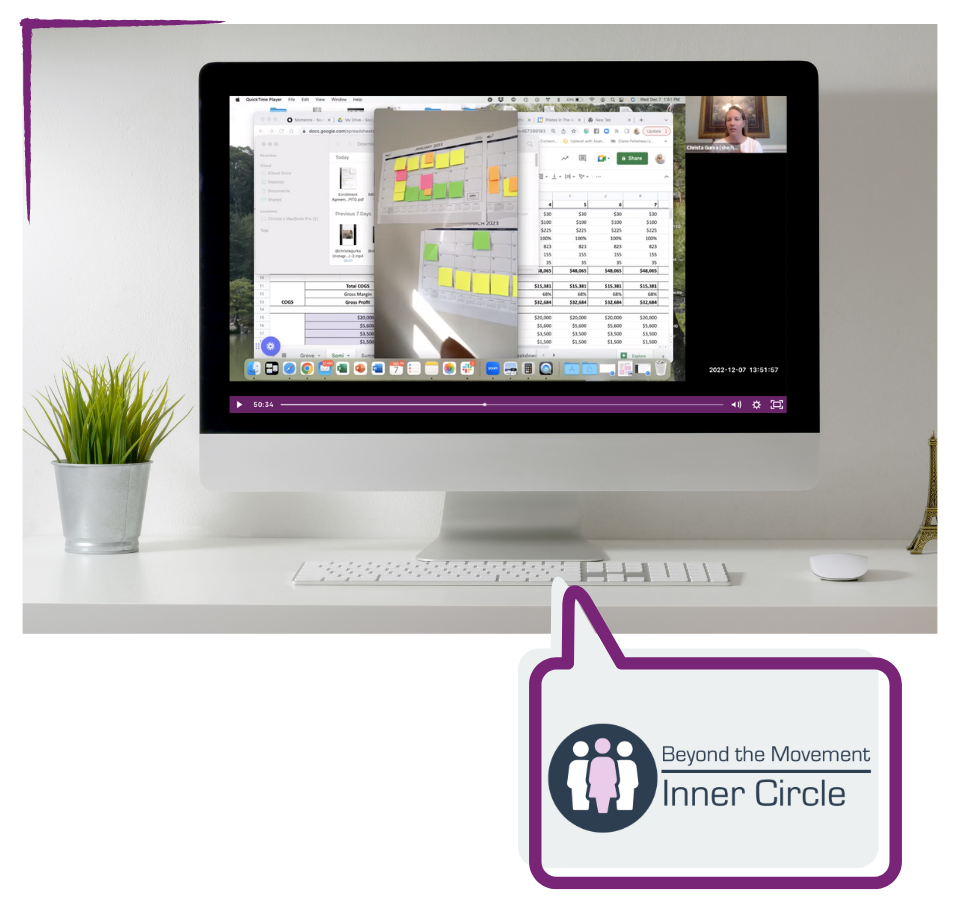Convert Leads to Clients
Mar 15, 2023
Creating a System to Convert Leads Into Paying Clients
What’s the best way to increase your revenue? You need to track and convert leads — turn prospective clients (leads) into paying clients. Some studies show that tracking leads can increase revenue by as much as 50%!
And to do that, you need a system. You need a clear, organized way to track the leads you have and convince them to pay for your services.
It’s something that many business owners overlook — and I’ve been there too! And the thought of creating a lead-tracking system can be overwhelming, especially if you aren’t very comfortable with technology.
But it’s worth the time and effort! Once you have that system in place, you’ve got the tools you need to attract the clients you want and increase your revenue.
Why it’s important to track and convert leads
The first step in converting leads is to attract the leads in the first place. There are countless ways to do that, from paid marketing to word of mouth. But in most cases, getting the lead isn’t the challenge — conversion is.
Before you can work on conversion, though, you need to understand the leads you have. And that means you need a tracking system.
You can use something as fancy as a CRM (customer relationship manager) or as simple as a spreadsheet. Choose a system that makes sense to you. (And if you want an easy way to start, check out my free lead tracking tool I created. Just listen to this podcast to grab the code.)
Once you have your spreadsheet or system in place, you can track the leads you get and figure out how to convert (and retain) them.
What do you want to track?
There are several ways to define conversions:
- Making an inquiry to scheduling a session
- Scheduling a session vs. actually showing up for that session
- Attending an intro session to becoming a long-term client
Decide which metrics are most meaningful to you, and set up a system for tracking that data. In my business, I track how many inquiries become clients, and how many initial clients become returning clients who buy long-term memberships.
Following up with your leads
Conversion requires some work on your part. You can’t just tell a potential client about your business and expect them to become a customer. You’ve got to address all the things that stand in the way of that conversion.
One of the biggest is just memory. Everyone is bombarded with so much information every day — ads, news, social media posts, and so on. It’s easy for potential clients to forget about your business simply because of all the other information they see.
That’s why it’s crucial to follow up with your leads. So, how do you decide which leads to prioritize and follow up with first?
Prioritizing leads
You can choose to follow up with all your leads, but that’s time-consuming and usually unsustainable. It’s more efficient to spend time nurturing the leads that have the best chance of converting. And to do that, you need to categorize your leads:
- Cold: People who don’t know you or your brand (e.g., someone who found your site via Google). In sales terms, this is the top of your funnel.
- Warm: People who already know something about you and your brand. This is the middle of the funnel.
- Hot: People who have already bought something from you (e.g., someone who attended an intro session). This is the bottom of the funnel.
Warm and hot leads are far more likely to become paying customers than cold leads are.
Understanding your ideal client
When you’re first building your lead-tracking system, it’s tempting to follow up with every single lead. But that’s not generally effective or efficient.
The best way to spend your time and resources is to focus on the people who are most likely to buy your services. And if your marketing is dialed in right, those people will also be the ones you want most as your clients!
That means you need to understand your ideal clients. And it’s just as important to know who isn’t your ideal client. A successful business isn’t all things to all people — it’s the best thing for some people.
So take the time to define who you want as a paying client — and who you don’t.
And once you’ve done that, you can use that information to organize your leads. In your spreadsheet or CRM, mark hot leads and create personalized follow-up sequences for them. Make it as easy as possible for your potential clients to say yes!
Analyzing tracking data
Tracking your leads gives you extra insight into your business. You can track how potential clients heard about you and see which contact methods are most effective in getting them to book a session (or become long-term clients).
But you should also track failed conversions. If you can figure out what made a potential client choose not to work with you, you can find ways to fix those parts of your business.
Tracking leads is worth the effort
There are so many things we do as business owners, and it’s easy to just push lead tracking to the back burner. But this is a crucial part of running a successful business. Simply put, if you want more revenue, you need to organize, prioritize, and track your leads so you can attract and convert the clients you want.
Want to learn more about converting leads, increasing revenue, and growing your business while also cutting back on your work hours? That’s what we do in my Beyond the Movement Inner Circle mentorship program.
The Inner Circle provides the resources and support you need to increase profits while working less. If you’re ready to step into your role as CEO and get out of day-to-day operations, the Inner Circle is where you need to be. Enrollment opens every few months, so click here now to get on the waitlist or join.
Lorem ipsum dolor sit amet, consectetur adipiscing elit. Cras sed sapien quam. Sed dapibus est id enim facilisis, at posuere turpis adipiscing. Quisque sit amet dui dui.
Stay connected with news and updates!
Join our mailing list to receive the latest news and updates from our team.
Don't worry, your information will not be shared.
We hate SPAM. We will never sell your information, for any reason.



